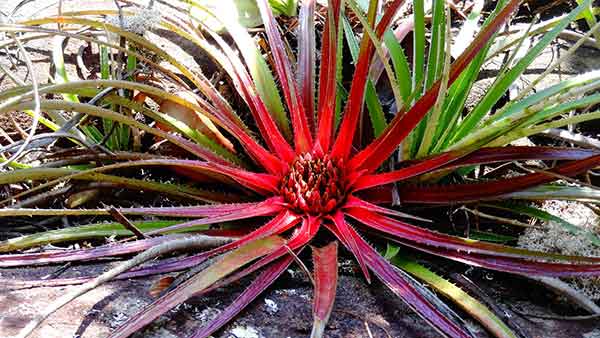Tropical rainforests occur in parts of Central and South America, Africa and south-east Asia, though some are fragmented and cover a much-reduced area than they once did, due mainly to clearing for agricultural purposes by man. The Amazon and Zaire rivers run through the largest areas of lowland tropical rainforest in the world.
In tropical climates, there is little difference between the seasons. Day and night are each twelve hours long. In tropical mountain forests, it is generally cooler, yet many plants there receive more direct sunlight. In the lowland tropical rainforests, daytime temperatures are very hot during the day, and it is cool at night. Many areas have frequent and heavy rainfall, with humidity levels usually exceeding 90%.
Plant types in the tropical rainforest are vines, creepers or epiphytes, which are not parasitic but cling to trees, some with aerial roots that absorb moisture from the air. They include carnivorous plants that trap insects, plus orchids, ferns, and bromeliads. Most bromeliads are epiphytic, but some do live on the forest floor.
General Considerations for Growing Tropical Houseplants
On the forest floor, there is usually minimal light. As a result, many of the most suitable adapted plants cultivated and sold as houseplants should be kept out of direct sunlight. The species range from having some quite specific requirements to those that are low maintenance. Many are or are similar to evergreens, and almost all require warmth and humidity. Some tropical plants, such as syngonium, particularly lend themselves to areas of shade or low light.
In their tropical habitat, the plants do not have a natural dormancy, but those species adapted as houseplants in generally temperate regions will grow more slowly due to the reduced daylight hours during parts of the year, and most will need a rest period, which is usually the winter season.

Prospective keepers of tropical rainforest plants are well-advised to research individual species. Across the range, many require specialized environments such as “hothouse” greenhouses. This environment can be replicated on a smaller scale in terrariums or as bottle gardens. However, there are many choices suitable for conventional greenhouses, at least during the summer, and those suitable for conservatories or indoors. There are many ways to display them to best effect, including making use of a bromeliad tree or log, which can be particularly useful for showing groups of smaller plants.
The display options are also considerable, and group displays can be attractive. While some are suited to be grown on frames or totem poles, some fare very well as trailing houseplants displayed in large dishes or as hanging baskets. Others, such as the air plant species, tillandsia, can be grown on small logs suspended on a thin wire. Tillandsia require little maintenance providing the humidity is suitable, and some varieties of tillandsia will tolerate lower temperatures than most tropical plant species.